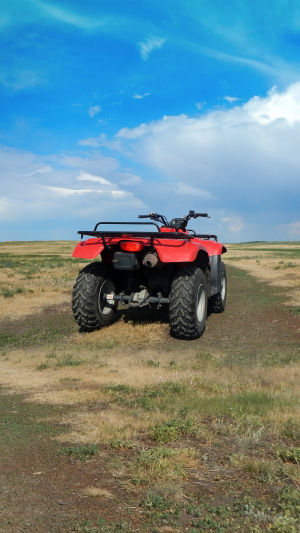An all-terrain vehicle, also known as a quad or four-wheeler, is a motorized off-highway vehicle designed to handle a wider variety of terrain than most other vehicles.
Unlike typical cars or trucks, ATVs are characterized by their large, low-pressure tyres and a handlebar for steering control.
This design allows them to traverse rocky paths, sandy dunes, muddy trails, and even snow-covered landscapes with relative ease. ATVs come in various sizes and configurations, typically classified by their intended use—whether for recreational, agricultural, or utility purposes.
Is an all-terrain vehicle a motorcycle? To address whether an ATV is a motorcycle, we need to understand the fundamental differences and similarities between these two types of vehicles.
<b>Similarities</b>
1. Both ATVs and motorcycles utilize internal combustion engines (or electric motors in more recent models) and share similar powertrain components like transmissions and drivetrains.
2. Unlike cars, both ATVs and motorcycles employ handlebars for steering, which offers a similar rider experience in terms of control dynamics.
3. Both require the rider to straddle the saddle, with legs on either side, offering a connected and immersive riding experience.
<b>Differences</b>
1. The most significant difference is the number of wheels. Motorcycles usually have two wheels, which necessitates balancing skills and a more dynamic interaction with the vehicle. ATVs, on the other hand, typically have four wheels (though some have three or six), providing greater stability and making them easier to manoeuvre for those less experienced in two-wheel riding.
2. ATVs are explicitly designed for rough and variable terrains, often equipped with features such as four-wheel drive and robust suspension systems. Motorcycles, while capable of tackling off-road conditions (especially dirt bikes and adventure motorcycles), generally aren’t as versatile in extreme terrains as ATVs.
3. In many regions, motorcycles are street-legal and must adhere to road safety regulations, including the use of lights, indicators, and number plates. ATVs are mostly intended for off-road use and may not comply with the same regulations, limiting their use on public roads.
While the question "Is an all-terrain vehicle a motorcycle?" might seem straightforward, it opens up a discussion about the distinctive qualities and functions of these two types of vehicles. ATVs, though sharing some characteristics with motorcycles, stand apart due to their increased stability, terrain versatility, and specific design features aimed at navigating challenging environments.





